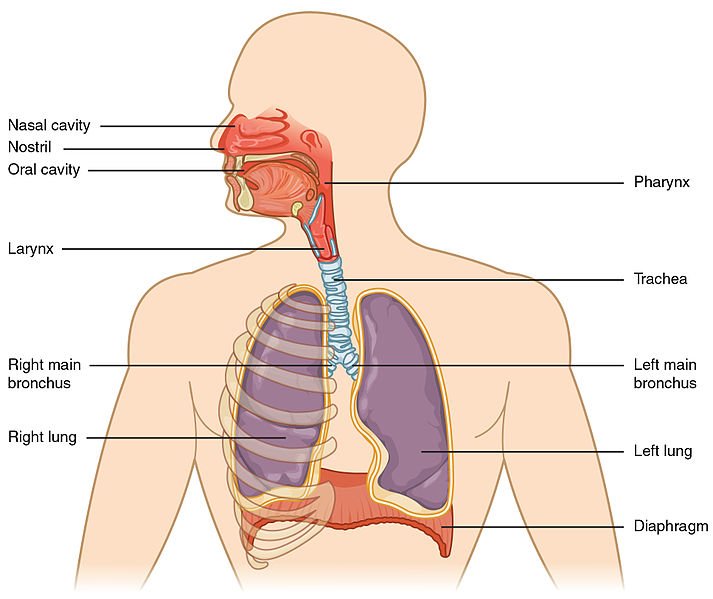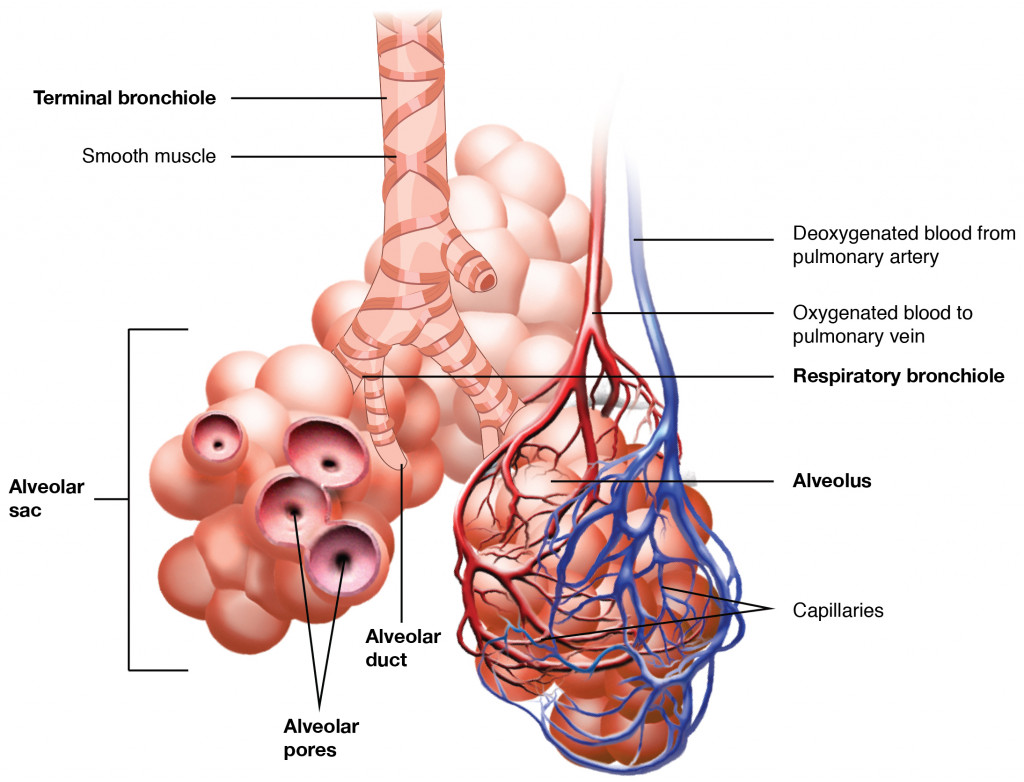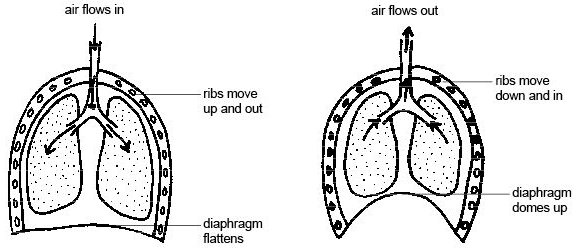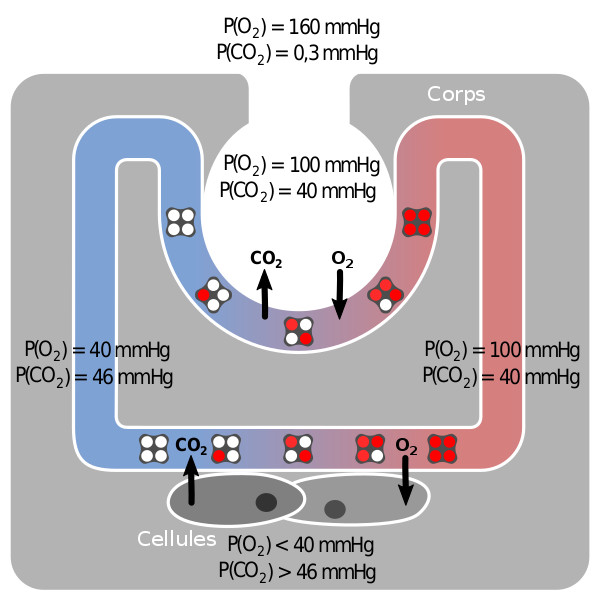Table of Contents (click to expand)
The respiratory system is in charge of supplying the cells of the body with oxygen, as well as expelling carbon dioxide. It is composed of the nose or nasal cavity, the pharynx, the larynx, the trachea, the bronchi, and the lungs.
Did you know that your right lung is slightly larger than your left lung? The left lung is narrower, because it has to make space for the heart, which is slightly tilted to the left. The right lung, however, is shorter and broader than the left lung because it has the liver right below it. Since the right lung is bigger, it supplies your body with more oxygen than the left lung!
Did you also know that at any given time, you’re breathing only through one nostril? This is called the nasal cycle, and why it happens is still not fully understood!
However, these are mere superficial facts about the organs in charge of supplying the body with oxygen. The nose and lungs, along with the pharynx, the larynx, the trachea and the bronchi, make up the respiratory system.
So, how does the respiratory system work?
Functions Of The Respiratory System
Your respiratory system is in charge of supplying the body with oxygen. It would be inefficient for each cell of the body be in charge of its own oxygen supply. The respiratory system therefore takes in oxygen from the atmosphere and passes that oxygen to the circulatory system, which transports that oxygen throughout the body.
Besides taking in oxygen, the respiratory system also expels carbon dioxide (CO2). The cells produce CO2 as a byproduct of metabolism. The excess CO2 must be thrown out. The respiratory system exchanges fresh oxygen for old CO2, which is called GAS EXCHANGE!
Expelling the CO2 also maintains the pH of blood at an optimum level of 7.4.
The respiratory system also makes it possible for us to speak and smell.
Also Read: Why Does The Human Body Release Carbon Dioxide?
Organs Of The Respiratory System
These critical functions for life are carried out by the different parts of the respiratory system—the nose or nasal cavity, the pharynx, the larynx, the trachea, the bronchi, and the lungs.
The air first enters through the nose. The epithelial cells in the nose produce mucus, which moistens the air, while blood vessels bring in heat to warm the air. The mucus also traps any dirt and pathogens that might try to invade the lungs.
Also inside the nose are millions of olfactory receptors that help us smell the world around us.

From the nose, the air will move down the pharynx and larynx and into the trachea. The pharynx and larynx connect the nasal cavity to the trachea and also ensures that our air passages remain open when breathing. The vocal cords are located within the larynx. As air rushes through the larynx and over the vocal cords, we can produce sound.
The trachea is a long tube supported by C-shaped cartilage rings and smooth muscles. The inside of the trachea is filled with mucus, again, to keep foreign particles out and ensure that the air stays nice and moist.
Think of the trachea like a long passageway. As you move down the trachea, it splits into the bronchi, which further spilt into the bronchioles. Through the divergent passageways of the bronchi, air travels into the lungs.
This keeps happening until the bronchioles end in the alveoli of the lungs.

The alveoli are where the exchange of gases takes place. They are air-filled sacs, sort of like balloons. They are in contact with the capillaries, which bring in oxygen-poor and carbon dioxide-rich blood to the lungs.
Also Read: Why Is The Food Pipe (Esophagus) Located So Close To The Windpipe (Trachea)?
Inspiration – Breathing In
Everything begins with the brain. The brain, mainly the medulla oblongata, senses that the body needs more oxygen and sends signals to the respiratory system to inhale.
In this effort, the muscles and bones associated with the respiratory system leap into action. Muscles pull and push the lungs, making them expand and contract.

Breathing relies on an important principle – pressure differences. The difference between the pressures inside the lungs and that of the outer environment dictates whether air will flow into the lungs or out of them. This pressure difference is created by changing the volume of the lungs. Remember, pressure and volume are inversely related, so the lower the volume, the higher the pressure inside.
To breathe in, we expand our lungs. This causes the pressure inside the lungs to be lower than the pressure of the atmosphere. Naturally, air will flow from an area of higher pressure to an area of lower pressure, meaning that the air from outside will make its way into the lungs.

The exchange of gases in the alveoli takes place on the principle of partial pressures. Partial pressure is the pressure that a gas exerts when it’s in a mixture. So, if there is a mixture of 3 gases in a jar, each gas will exert its own pressure in the jar. The total pressure in the jar will be the sum of the partial pressures of the three gases.
In the alveoli, the partial pressure of oxygen is high, whereas in the blood vessel, the partial pressure of oxygen is low. As a result , oxygen will move from the alveoli, where it has high partial pressure, into the blood vessel, where it has low partial pressure.
Similarly, carbon dioxide’s partial pressure is high in the blood vessel and low in the alveoli, so it will flow from the blood vessel into the alveoli.
This exchange of gases happens constantly in the approximately 500 million alveoli found in the lungs!
From here, the now oxygen-rich blood will make its way to the rest of the body to supply the cells with oxygen.

Expiration – Breathing Out
To expel the carbon dioxide, the lungs now contract inwards. This reduces the volume inside the lungs, thereby increasing pressure. This pressure is now greater than the pressure in the atmosphere, so air will move out from the lungs and into the air. And just like that, you’ve completed a full cycle of breathing!
A Final Word
Our entire respiratory system is also important for our immune system. The mucus and hairs in the nose and trachea prevent foreign particles from entering the body. The lungs even have their own bodyguards, immune cells called macrophages, which protect the lungs in case any pathogens manage to infiltrate the lungs.
For the most part, this elaborate act is performed to get oxygen into our bodies unconsciously. We don’t have to think about getting enough oxygen, unless you’re doing yoga or have just finished exercising. Breathing is one of the most instinctual things we do as living things—the first and last thing we do!
So, the next time you catch yourself breathing in deeply and enjoying the smell of a warm sunny day outside, don’t forget to thank your hard-working lungs for making all of that possible!
Also Read: What Happens To The Dust We Inhale?
How well do you understand the article above!

References (click to expand)
- How the Lungs Work - The Lungs | NHLBI, NIH. The National Heart, Lung, and Blood Institute
- Anatomy of the Respiratory System - Health Encyclopedia. The University of Rochester Medical Center
- Patwa, A., & Shah, A. (2015). Anatomy and physiology of respiratory system relevant to anaesthesia. Indian Journal of Anaesthesia. Medknow.
